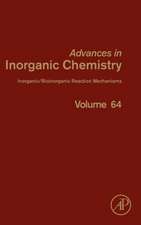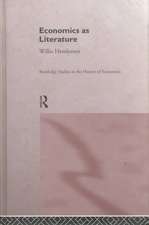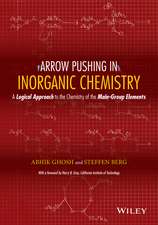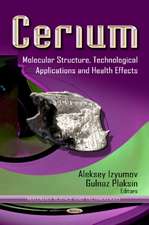Introduction to Modern Inorganic Chemistry, 6th edition
Autor R.A. Mackay, W. Hendersonen Limba Engleză Paperback – 18 noi 2002
Introduction to Modern Inorganic Chemistry begins by explaining the electronic structure and properties of atoms, then describes the principles of bonding in diatomic and polyatomic covalent molecules, the solid state, and solution chemistry. Further on in the book, the general properties of the periodic table are studied along with specific elements and groups such as hydrogen, the 's' elements, the lanthanides, the actinides, the transition metals, and the "p" block. Simple and advanced examples are mixed throughout to increase the depth of students' understanding.
This edition has a completely new layout including revised artwork, case study boxes, technical notes, and examples. All of the problems have been revised and extended and include notes to assist with approaches and solutions. It is an excellent tool to help students see how inorganic chemistry applies to medicine, the environment, and biological topics.
Preț: 564.76 lei
Preț vechi: 664.43 lei
-15% Nou
Puncte Express: 847
Preț estimativ în valută:
108.06€ • 113.24$ • 89.34£
108.06€ • 113.24$ • 89.34£
Carte tipărită la comandă
Livrare economică 12-26 aprilie
Preluare comenzi: 021 569.72.76
Specificații
ISBN-13: 9780748764204
ISBN-10: 0748764208
Pagini: 628
Dimensiuni: 210 x 279 x 33 mm
Greutate: 1.45 kg
Ediția:6Revizuită
Editura: CRC Press
Colecția CRC Press
ISBN-10: 0748764208
Pagini: 628
Dimensiuni: 210 x 279 x 33 mm
Greutate: 1.45 kg
Ediția:6Revizuită
Editura: CRC Press
Colecția CRC Press
Public țintă
UndergraduateRecenzii
"Overall the chemistry is very solid in this book . . . I would definitely recommend that this book be stocked in a university library."
– Brian Murphy, Department of Chemistry, UAE University, in Physical Sciences Educational Review, Vol. 6, No. 1
"What is attractive about this book? First, it provides an exhaustive overview of the fundamental bases of inorganic chemistry. Second, boxes located in the margins or in the middle of pages provide enlightening facts about inorganic chemicals as they relate to everyday life…I am convinced these linkages between inorganic chemistry and real life are essential for attracting talented young students to the field"
- Bernard Meunier, Chemistry International , 2003
– Brian Murphy, Department of Chemistry, UAE University, in Physical Sciences Educational Review, Vol. 6, No. 1
"What is attractive about this book? First, it provides an exhaustive overview of the fundamental bases of inorganic chemistry. Second, boxes located in the margins or in the middle of pages provide enlightening facts about inorganic chemicals as they relate to everyday life…I am convinced these linkages between inorganic chemistry and real life are essential for attracting talented young students to the field"
- Bernard Meunier, Chemistry International , 2003
Cuprins
INTRODUCTION; Inorganic Chemistry and the Discovery of the Elements; Development; Recent Advances; Inorganic Nomenclature; Approach to Inorganic Chemistry and Further Reading; Problems; THE ELECTRONIC STRUCTURE AND THE PROPERTIES OF ATOMS; Introduction; Theory of the Electronic Structure of Hydrogen; Many-electron Atoms; Shapes of Atomic Orbitals; Further Properties of the Elements; ; COVALENT MOLECULES; DIATOMICS; General Background; Diatomic Molecules; ; POLYATOMIC COVALENT MOLECULES; Introduction; The Shapes of Molecules and Ions Containing p Bonds Only; The Shapes of Species Containing p Bonds; General Approaches to Bonding in Polyatomic Species; Bonding in Polyatomics; The Two-centre Bond Approach; Two-centred Orbitals; Hybridisation; Delocalized, or Multi-centred, s Orbitals; p Bonding in Polyatomic Molecules; An Example of the Approach Using Delocalized Bonding Throughout; Extension to Other Molecules; Problems; ; THE SOLID STATE; Simple Ionic Crystals; The Formation of Ionic Compounds; The Born-Haber Cycle; The Lattice Energy; The Endothermic Terms in the Formation of an Ionic Solid; Bonding Which is not Purely Ionic; Metallic Bonding; Complex Ions; The Crystal Structures of Covalent Compounds; Defect Structures and Nonstoichiometric Solids; Problems; ; SOLUTION CHEMISTRY; Aqueous Solutions; Solubility; Acids and Bases; Oxidation and Reduction; Nonaqueous Solvents; Solubility and Solvent Interaction in Nonaqueous Solvents; Acid-base Behaviour in Nonaqueous Solvents; General Uses of Nonaqueous Solvents; Liquid Ammonia; Anhydrous Acetic Acid; 'Superacid' Media; Bromine Trifluoride; Supercritical Fluids; Problems; ; EXPERIMENTAL METHODS; Separation Methods.
Descriere
This popular and comprehensive textbook provides all the basic information on inorganic chemistry that the undergraduate needs to know. It begins by explaining the electronic structure and properties of the atoms, and develops the principles of covalent and polyatomic covalent molecules, the solid state, and solution chemistry. Further on in the book, the general properties of the periodic table are studied along with specific elements and groups such as hydrogen, the 's' elements, the lanthanides, the actinides, the transition metals, and the 'p' block. This edition has a completely new layout including revised artwork, case study boxes, technical notes and examples. All of the problems have been revised and include notes added to help students with solutions or approaches.









